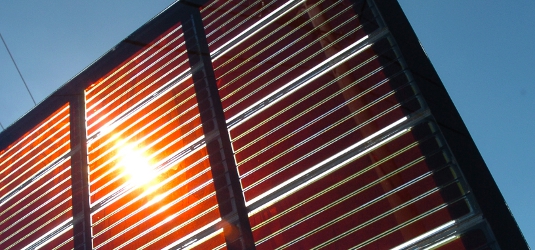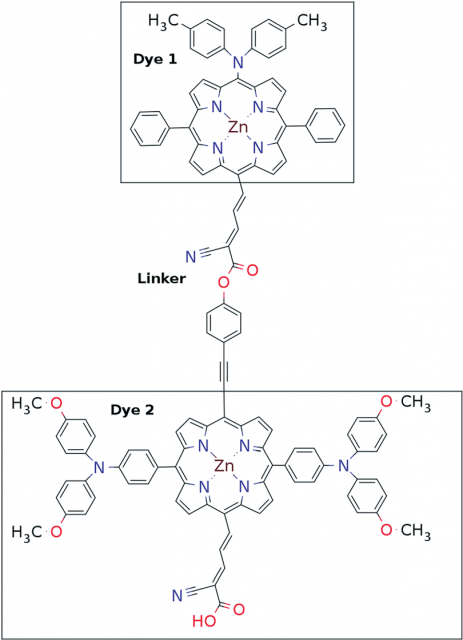Porphyrin complexes for high efficiency solar cells
As the search for renewable energy sources has intensified, the discovery of efficient and cheap technologies for exploiting the energy from the sunlight has emerged as a key challenge.

Higher efficiency plays an increasingly important role in making competitive solar cell designs as the price of silicon continues to drop. At present, the actual silicon solar cell accounts for less than 25 % of the cost of a complete solar panel installation and the cost of the support structure is becoming increasingly important. Higher efficiency reduces the required area and thereby reduces the cost of both the solar cells and their support structure.
One of the alternatives to silicon that is cheap and efficient is the dye-sensitized solar cell, which is inexpensive, flexible and environmentally friendly. There are some drawbacks, though. An important one, common to all the traditional molecular based photovoltaic systems, is their inefficiency in capturing the red and infrared part of the solar spectrum. In fact, they are often transparent in the red, suggesting the addition of a second solar cell to intercept that part of the solar spectrum. Such tandem cells have the potential to double the output voltage of a solar cell at the expense of a lower current. As lower currents are associated with smaller losses and higher fill-factors, as observed in experiments under low light intensity, trading a high current for a high voltage could boost the efficiency of the cell. But it is not that easy to build them.
Conventional tandem solar cells (organic as well as inorganic) combine two or more types of materials that are separated by interfaces where electrons and holes are exchanged. Remember that a semiconductor, like silicon, that has been doped with donor impurities is known as an n-type semiconductor, because the conductivity is due mostly to the negative electrons. A material that has been doped with acceptor impurities is known as a p-type semiconductor because the conductivity is due mostly to the positively charged holes. Most current solar cells are a single crystal silicon p-n junction.
Still, known p-n type tandem dye-sensitized solar cells have not been able to surpass the efficiency of the single ones so far. This is mainly because the interfaces are highly critical and inevitably contain defects and other imperfections, which act as scattering and recombination centres for the charge carriers.
The problem of controlling the atomic structure of the interface could be circumvented using molecular complexes where molecules absorbing in different parts of the solar spectrum are combined with atomic precision through synthetic chemistry. The design of such complexes is clearly a daunting experimental challenge. However, using ab initio calculations it is now possible to search a large variety of possible materials and identify promising candidates which could be considered experimentally.
This exactly what a team of researchers, including Angel Rubio from UPV/EHU, Materials Physics Center and DIPC, has done1 using a specially-built database containing calculations of more than 5000 dyes. As a result, the researchers propose new molecular complexes as ideal candidates to be synthesized experimentally.
The database, which is public (you can find it here), contains in excess of 5000 porphyrin dyes. Porphyrins have been widely used in dye-sensitized solar cells including the system with the highest reported efficiency so far. Atomic and electronic structures are recorded together with quantum mechanical calculations based on the use of density functional theory (DFT).

The researchers find three systems with the capability of avoiding the inherent problems of disorder and defects found in solid state photovoltaics. In all three cases, high energy electron-hole pairs are generated by absorption of two photons which allow for higher output voltages while harvesting a broader range of the solar spectrum.
This research establishes a new concept of molecular tandem-based devices that could have important implications in the future of the photovoltaic industry.
Author: César Tomé López is a science writer and the editor of Mapping Ignorance.
References
- Kristian B. Ørnsø, Juan M. Garcia-Lastra, Gema De La Torre, F. J. Himpsel, Ángel Rubio and Kristian S. Thygesen (2015) Design of two-photon molecular tandem architectures for solar cells by ab initio theory Chemical Science DOI: 10.1039/c4sc03835e ↩